Craft and Technology
Craft & Technology
Design & Technology
Bringing Ideas to Life through Design and Technology (D&T)
Our D&T curriculum offers students a thoughtfully-designed blend of hands-on and minds-on experiences. We aim to nurture confident, imaginative learners who find joy in creating, problem-solving, and appreciating how design shapes everyday life.
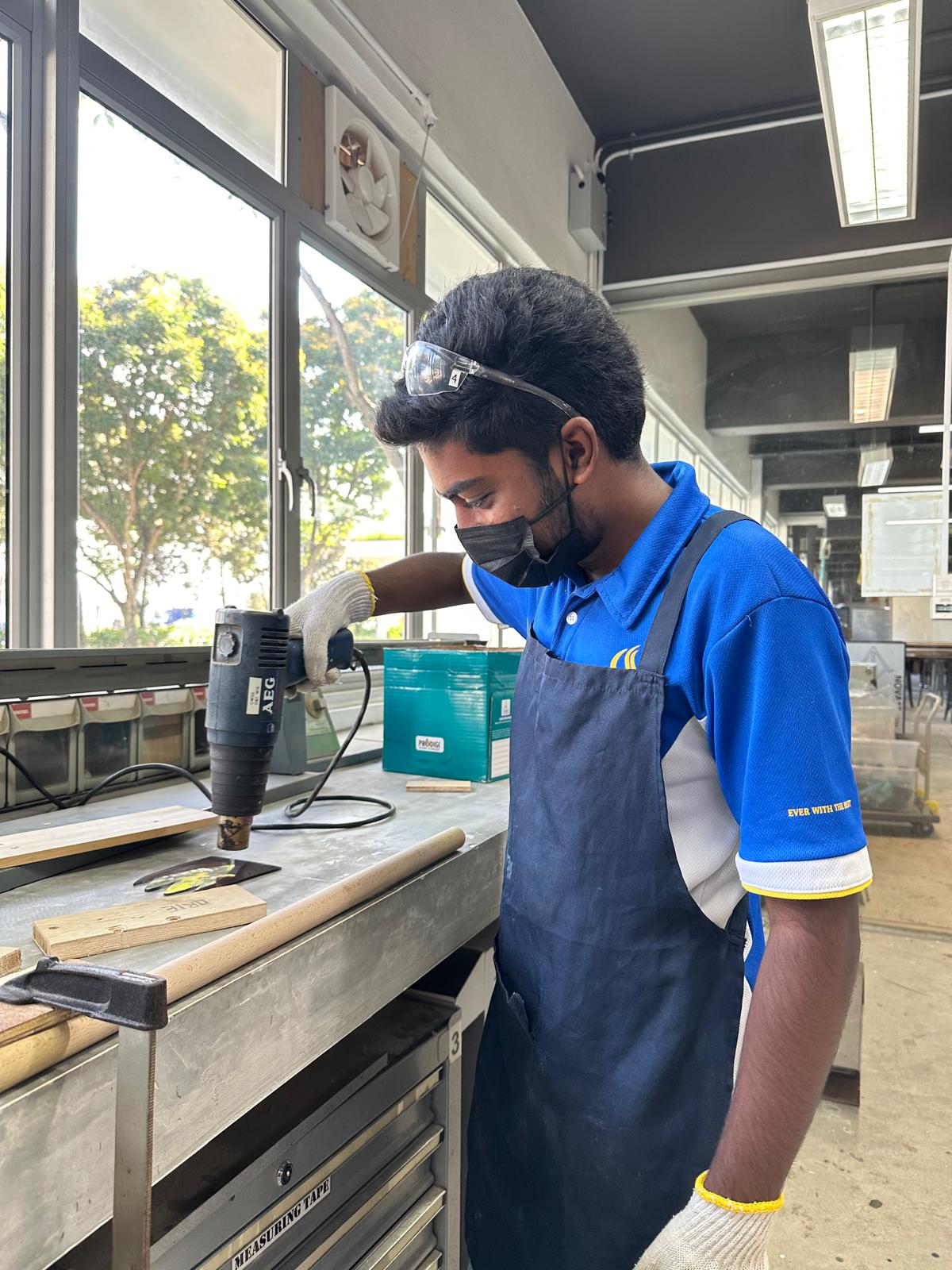
Upper sec student using a hot air gun as part of his prototyping process
Lower Secondary: Laying the Foundations
In lower secondary, students are introduced to the exciting world of design through fun and practical design-and-make tasks. They learn to explore real-world problems, sketch and communicate ideas — both on paper and using digital sketching tools. In the workshop, they gain confidence working with a variety of tools and materials, building both creativity and technical skills. Students also begin using digital platforms like Onshape, a cloud-based 3D CAD software, to visualize and develop their ideas in a virtual environment.

Upper Secondary: Deepening Skills with Technology
At the upper secondary level, students take on more complex design challenges through coursework. They apply a structured design process to identify user needs, conduct research, generate ideas, and develop functional prototypes.
The curriculum continues to evolve with the advancement of technology, including the growing relevance of tools such as Artificial Intelligence (AI), which are increasingly recognized for their potential to support ideation and development.

Throughout this process, students learn to manage project timelines, document their thinking, and reflect critically on their outcomes—developing independence, resilience, and real-world problem-solving skills.
With every challenge and creation, the D&T curriculum nurtures critical, inventive, and adaptive thinking—shaping confident problem-solvers for a fast-changing, technology-driven world.
Art
Our Art Programme offers a rich blend of visual art, art theory, art history, and art critique. Rooted in a project-based approach, students explore, experiment, and create across a wide range of traditional and digital media while developing both technical skills and personal expression.
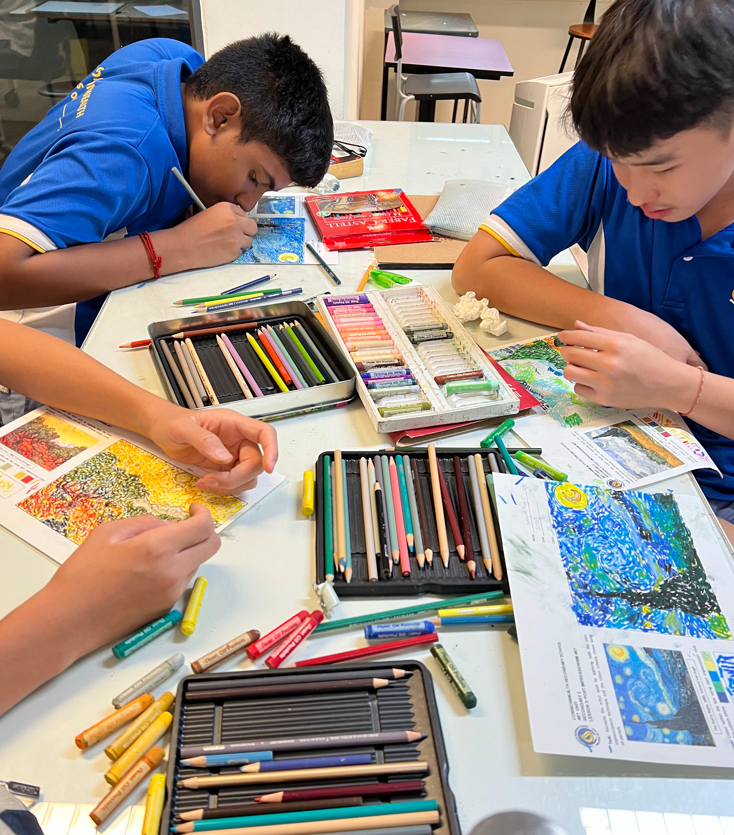
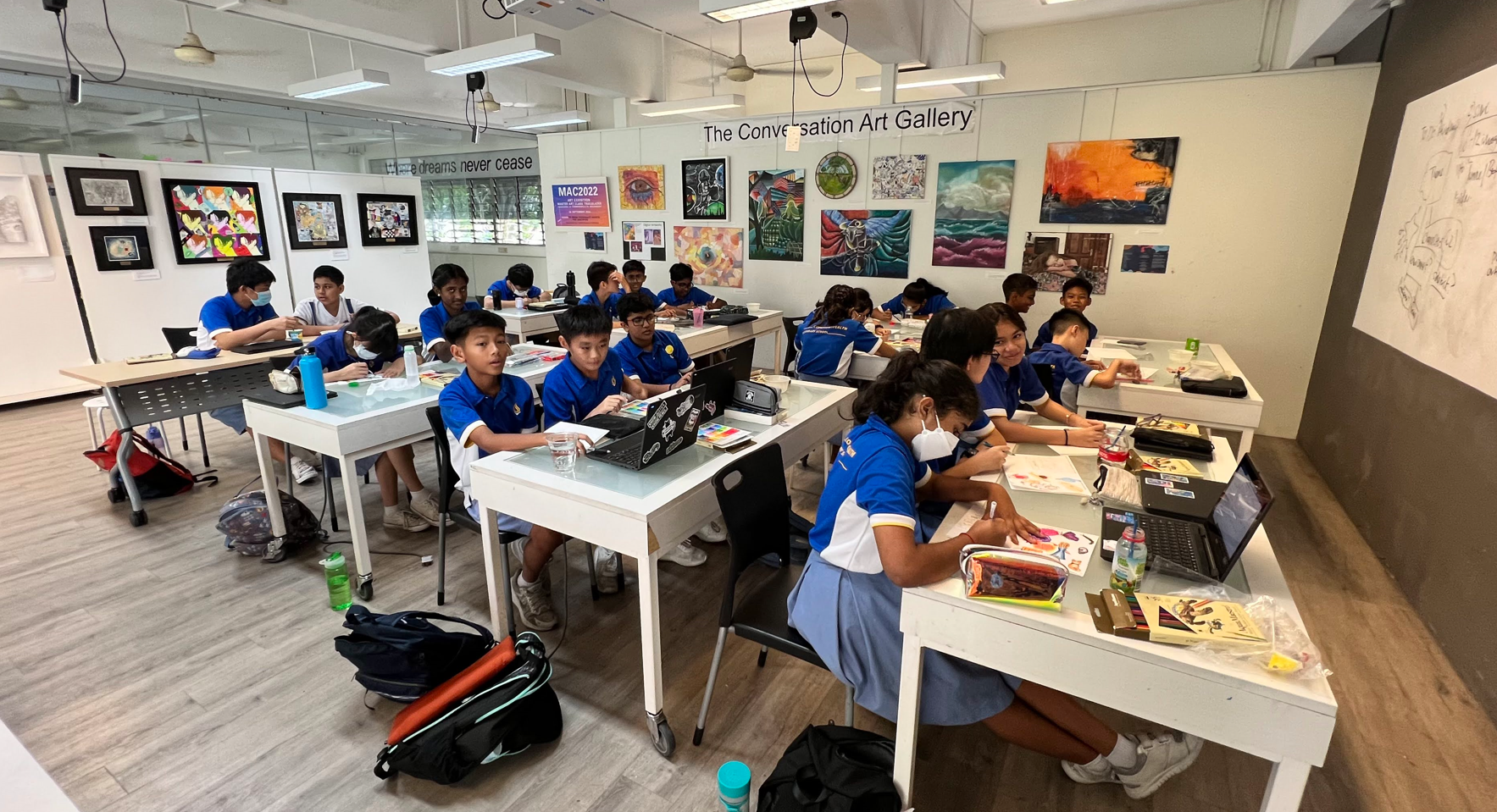
1. Learning Through Technology and AI
AI and EdTech are central to our lessons, reshaping how students ideate, create, and critique. Students use AI not just as a creative tool, but to expand their conceptual thinking and digital fluency in an evolving artistic landscape.
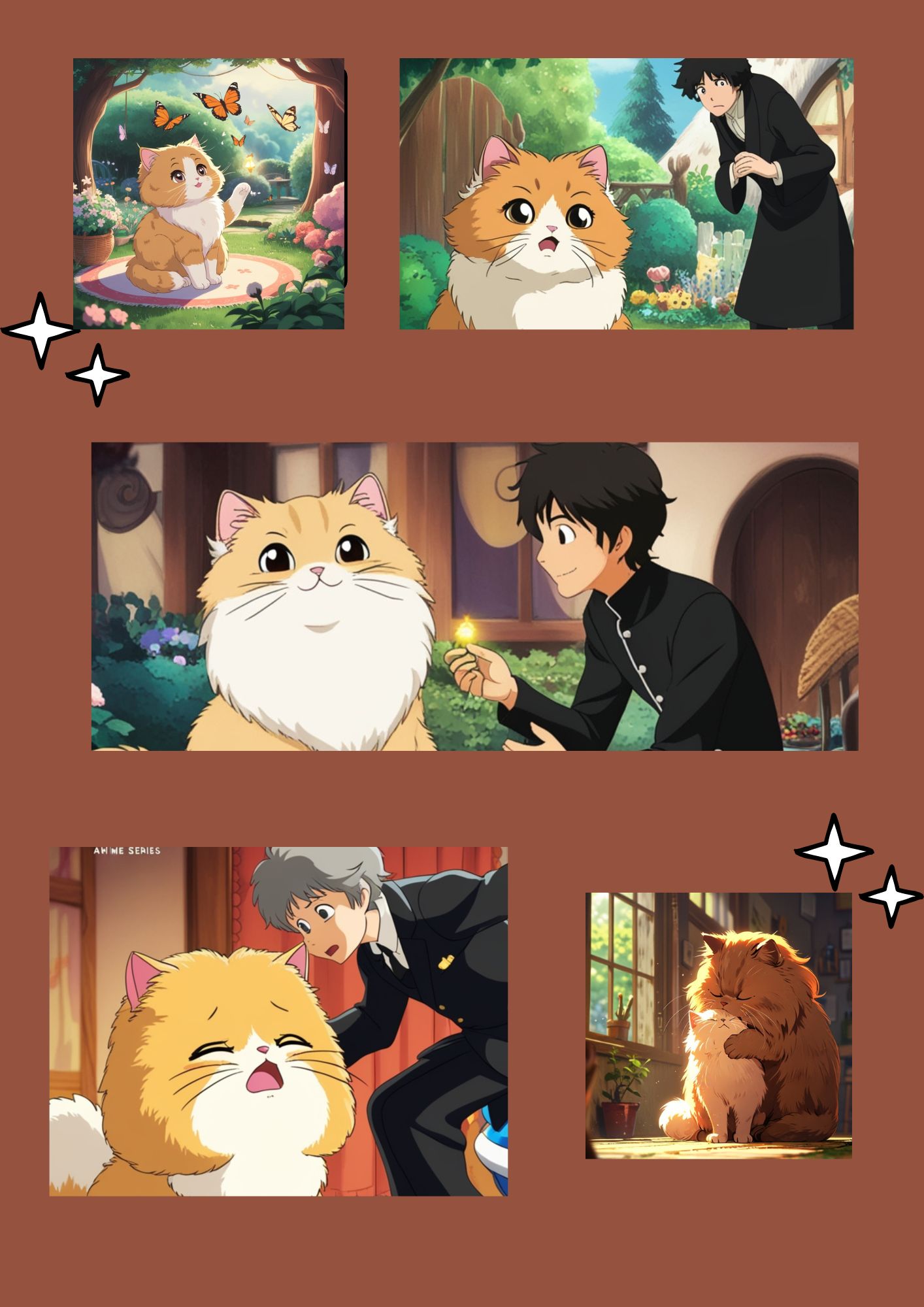
2. Making Thinking Visible with Drawing
Drawing — both analogue and digital — is used to visualise thought processes, support ideation, and develop creative clarity. It encourages problem-solving, experimentation, and communication through visual language.
3. Learning with Portfolio
Students document, curate, reflect, and (re)present their learning journeys through portfolios. This process builds critical thinking, artistic ownership, and readiness for further studies in the arts.
Programme Outcomes
· Develop artistic skills and a personal voice
· Gain confidence through exploration and reflection
· Appreciate art’s role in society, past and present
· Build visual and critical literacy for the future
Music
The Lower Secondary Music Curriculum aims to equip students with the skills to express themselves confidently through music creation and performance. It is designed around the three key Musical Processes: Listening, Creating, and Performing. Through these, students explore music from multiple perspectives—as performers, composers, and audience members—building musical understanding that is both personal and purposeful.
In Lower Secondary, students develop their musical skills progressively. In Secondary One, they learn to play the ukulele, focusing on instrumental techniques and ensemble playing. They also use BandLab, a digital music production tool, to create immersive soundscapes and experiment with music technology. In Secondary Two, students transition to learning the keyboard while exploring the connection between music and film by composing original soundtracks using Mixcraft software. Throughout the two years, students are exposed to a variety of musical genres and cultures, encouraging them to appreciate diverse musical styles. These experiences foster creativity, teamwork, and self-expression, while helping students build confidence and see how music relates to real-world contexts.
To deepen their musical experience, students are also given opportunities to attend live performances and musicals, such as The Phantom of the Opera. These curated concert experiences aim to broaden their exposure to the performing arts and connect classroom learning with authentic musical encounters. (Note: Participation in some of these activities may be offered only to selected groups of students.)
At the Upper Secondary level, we offer G1 Music, where students develop practical music skills through instrument learning, music creation, and performance. They build foundational knowledge in musical elements, explore different genres, and engage in hands-on music-making that encourages creativity and self-expression.
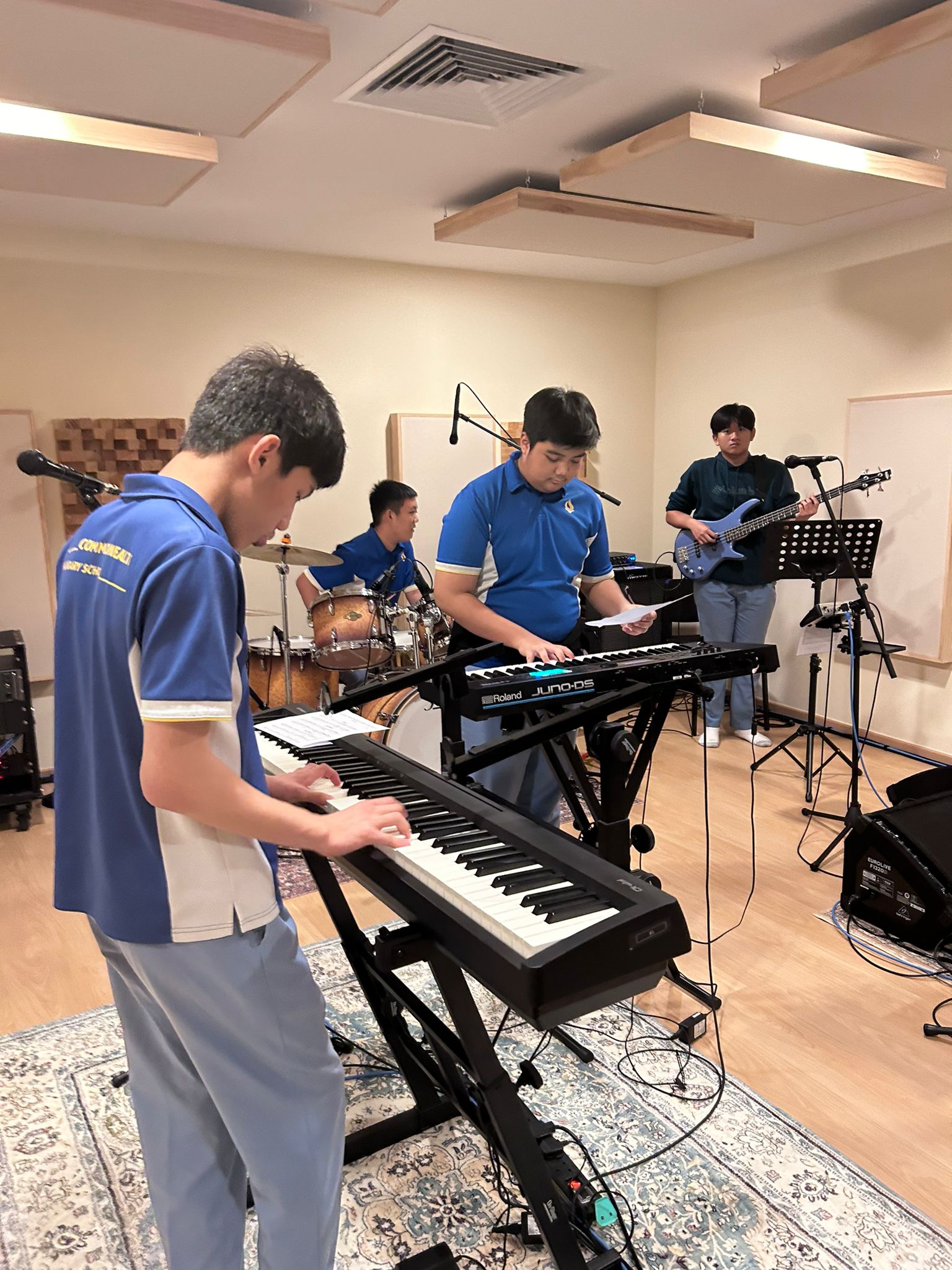
|
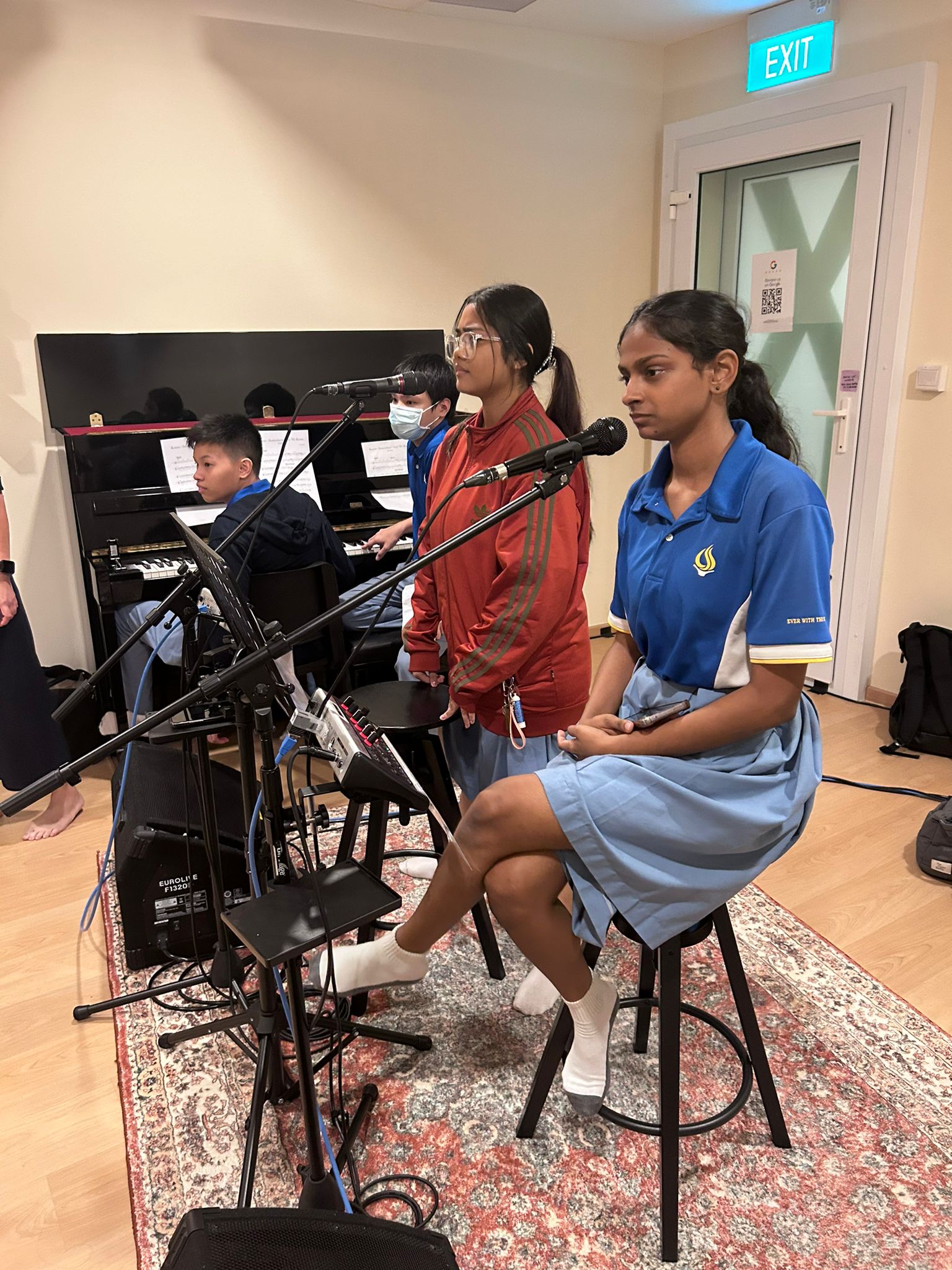
|
|---|
As part of the G1 Music experience, students take part in an end-of-year performance at ITE, showcasing what they have learned in a real concert setting. They are also brought on a learning journey to a professional music recording studio, where they get a chance to record a piece of music. These authentic experiences not only deepen their musical learning but also build confidence and provide a sense of accomplishment.
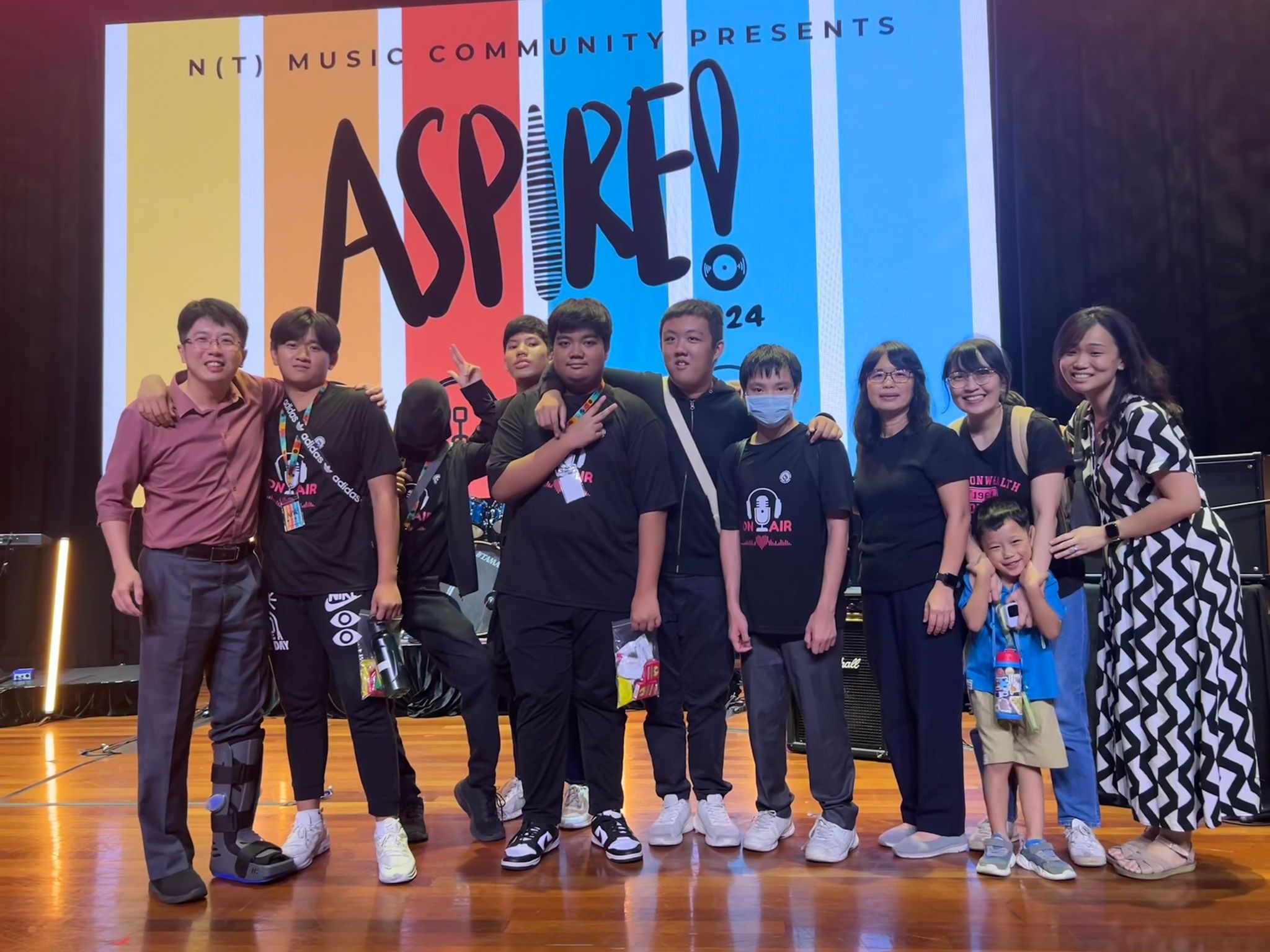
|
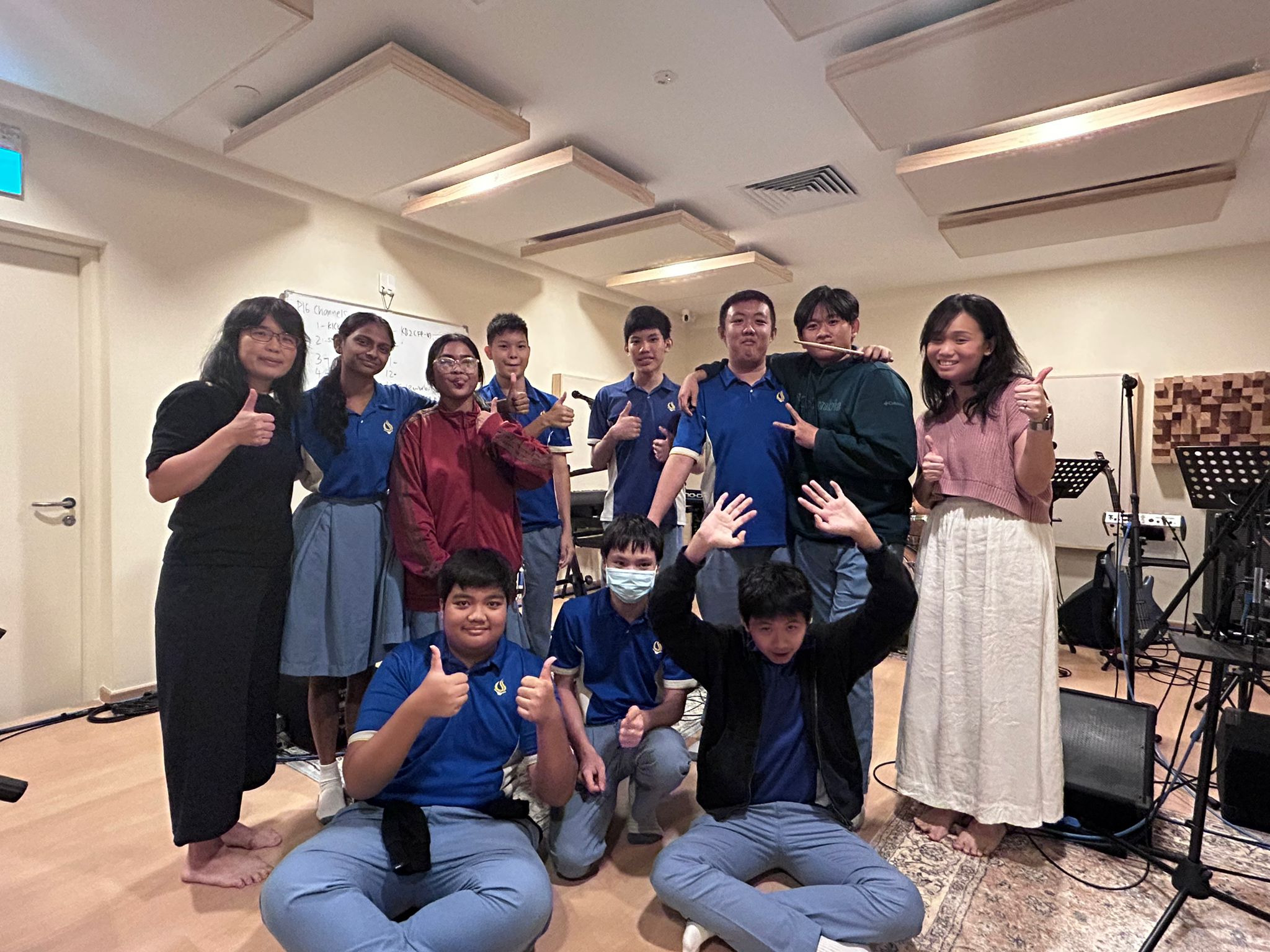
|
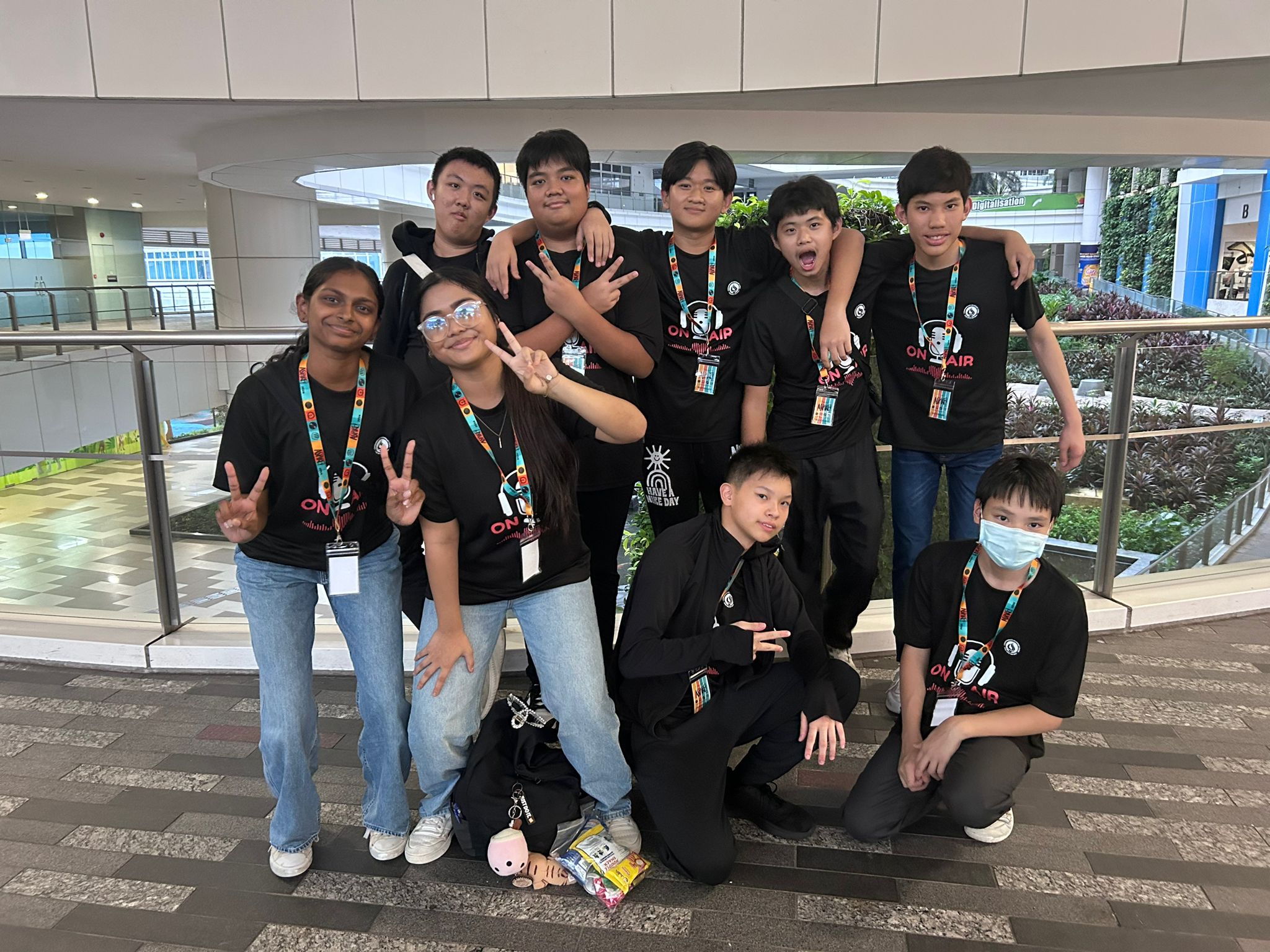
|
|---|

